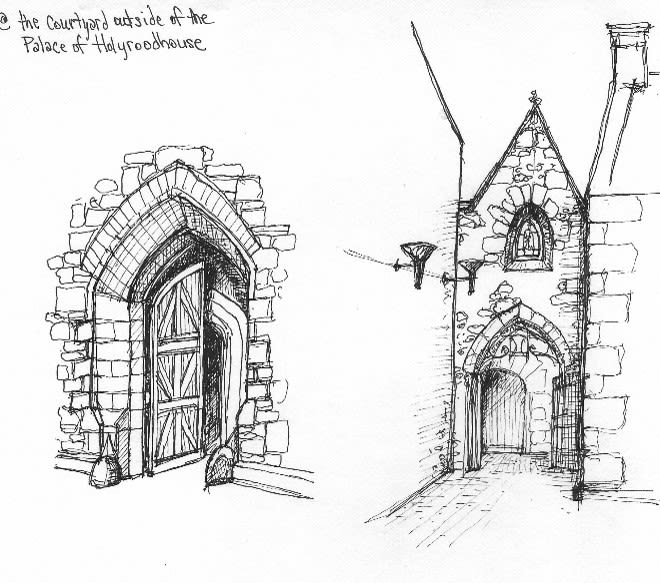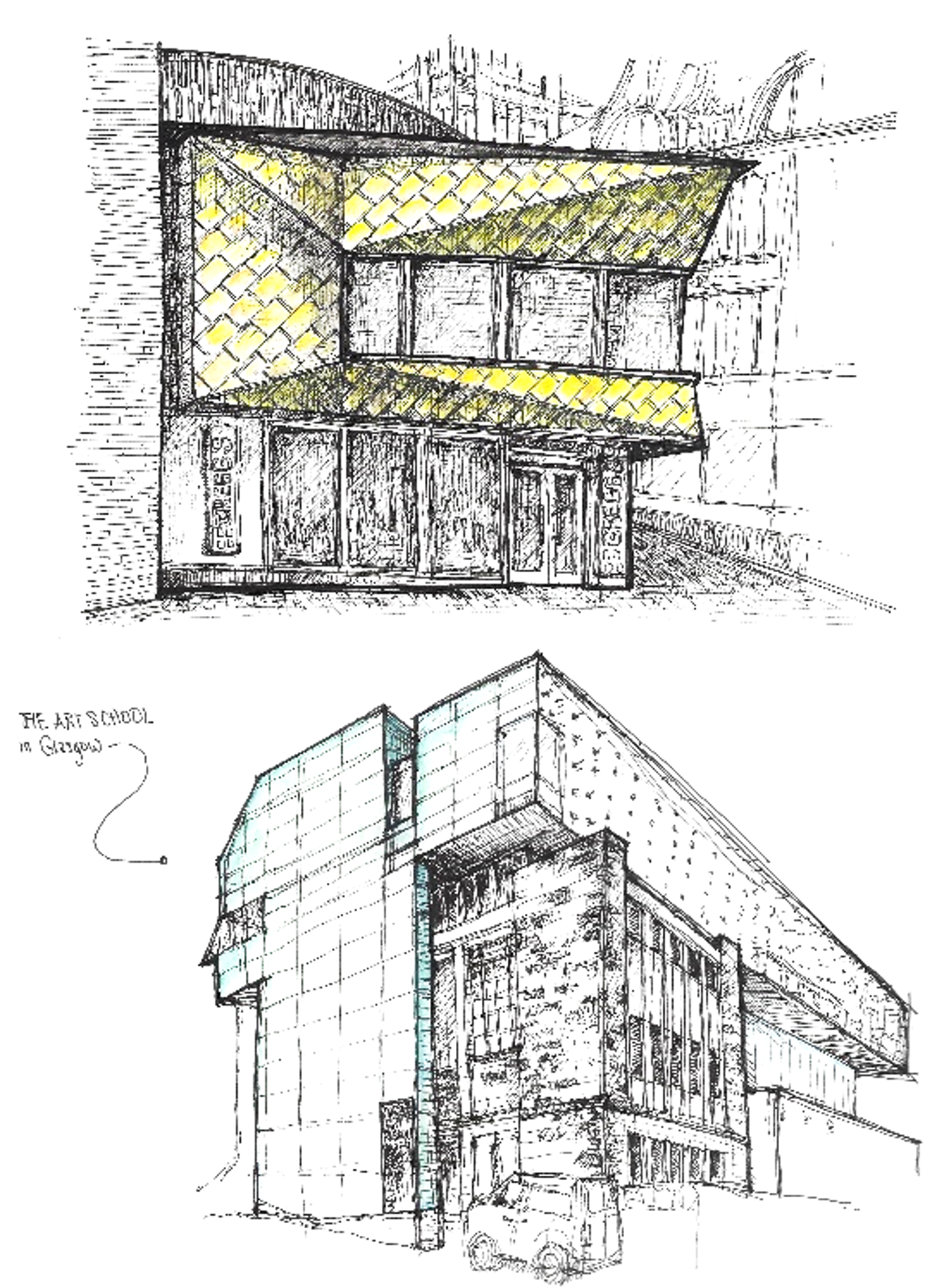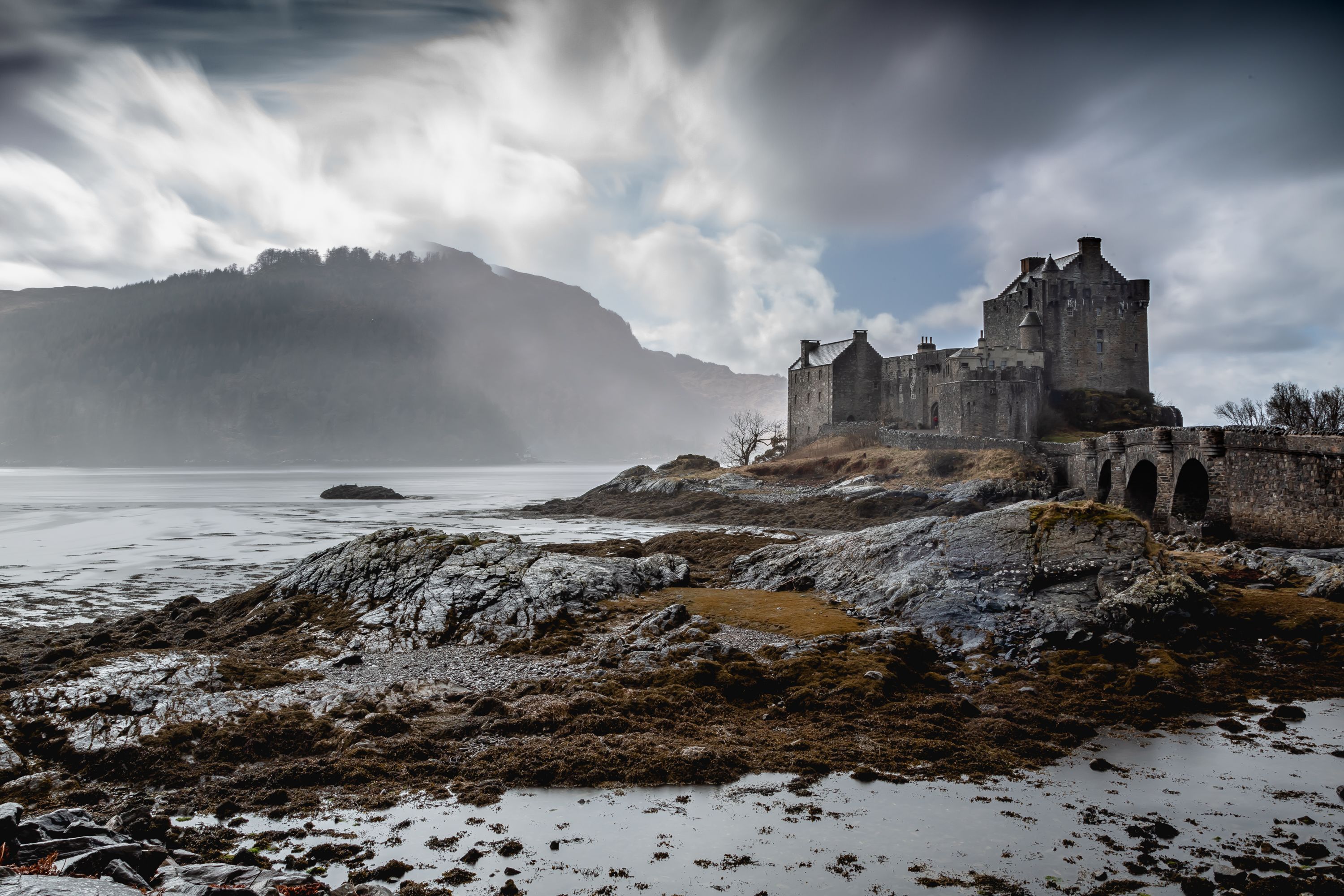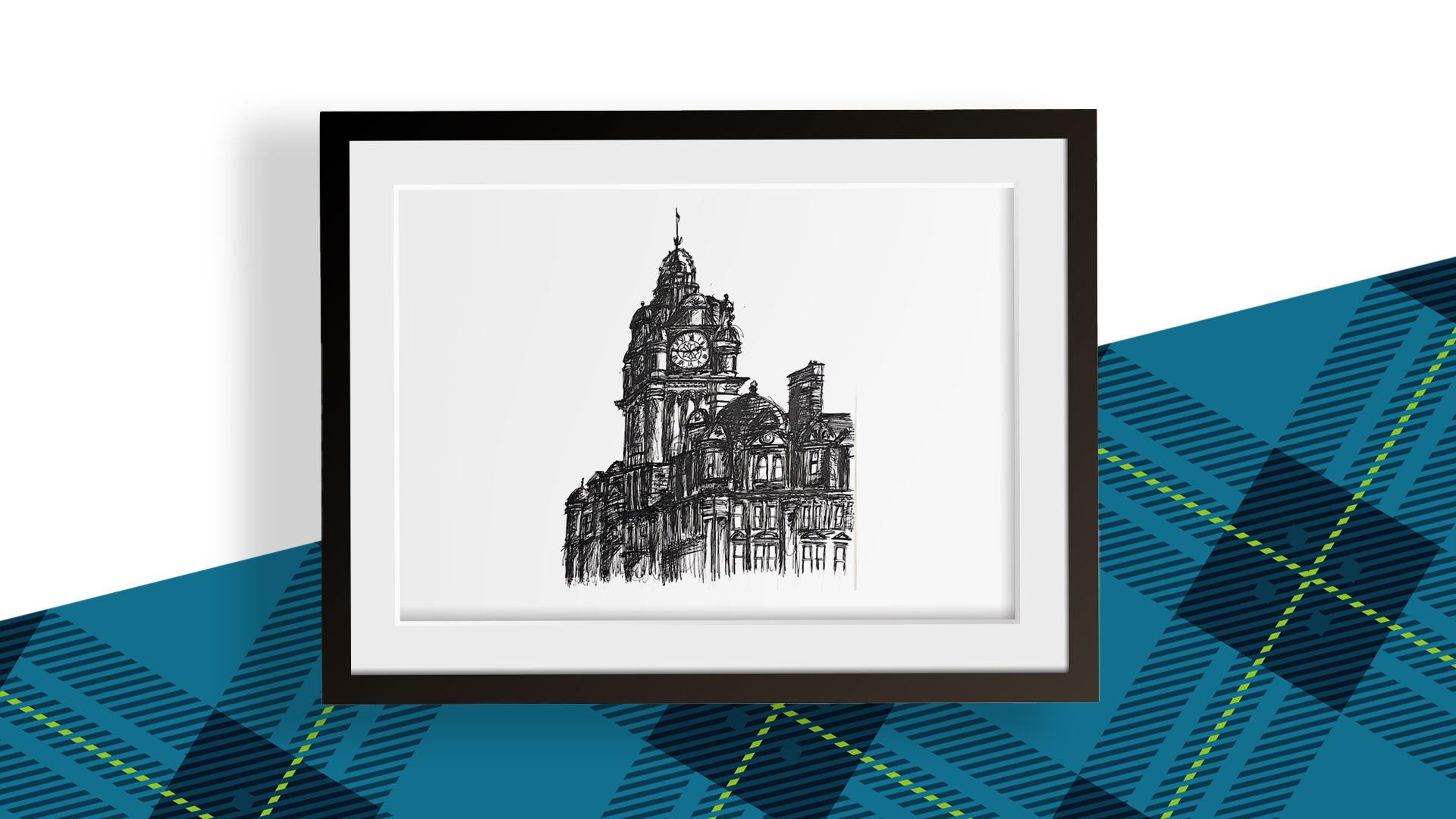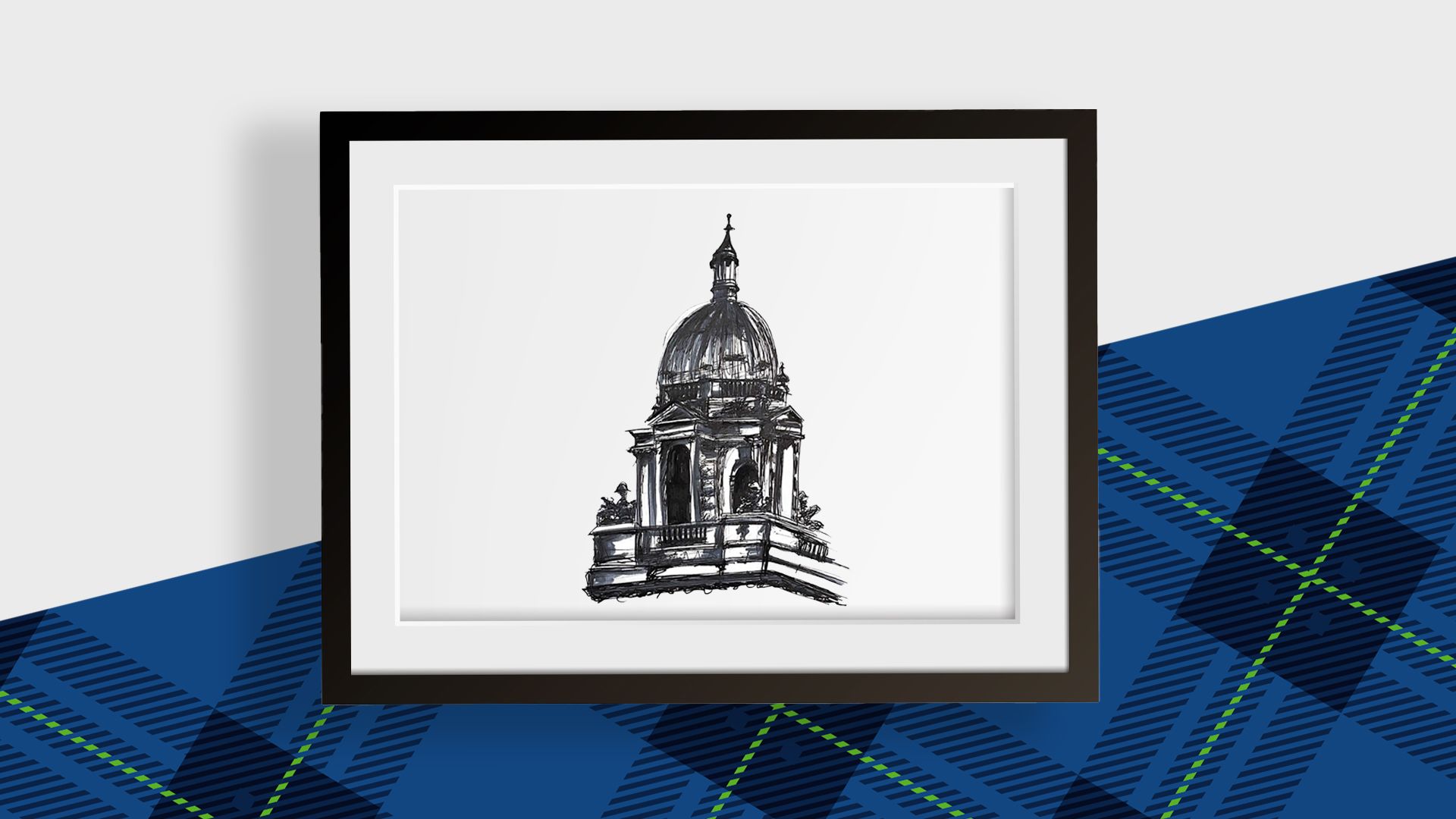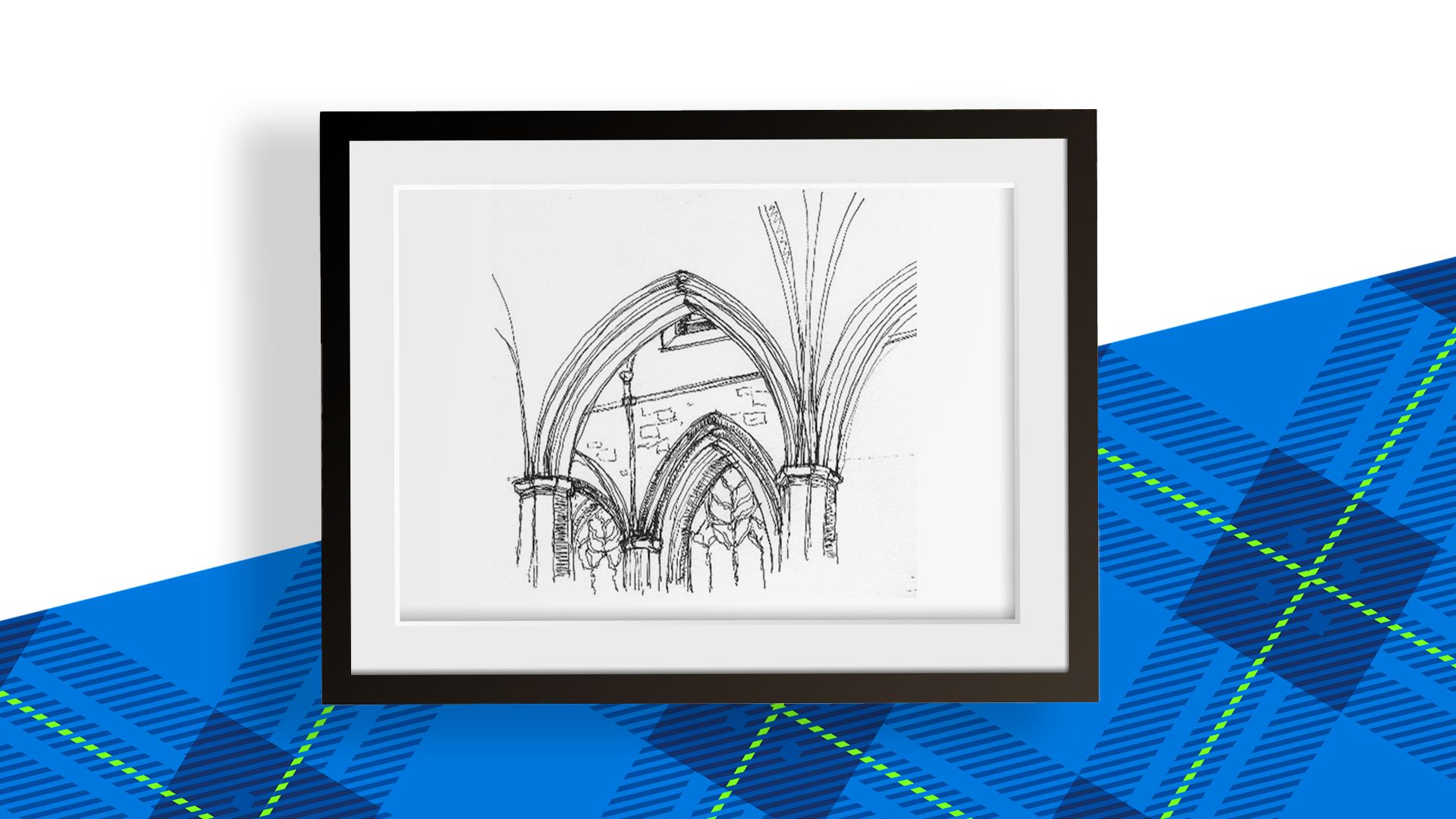Architectural Sketch Tour of Scotland

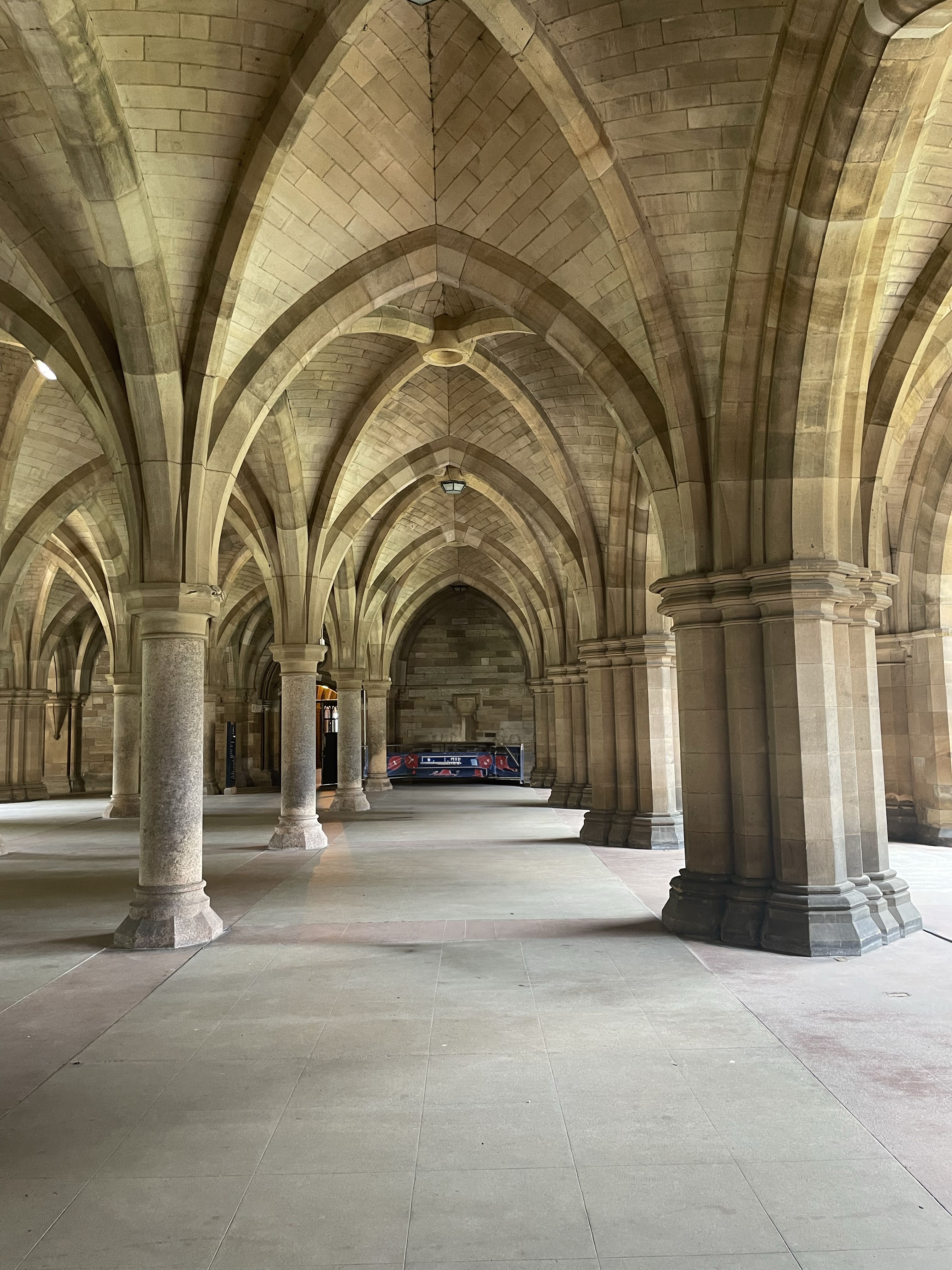
One of the most essential and foundational skills for a designer is sketching. That is to take what we see and experience and boil it down to a graphic or image that can be effectively implemented.
Sadly, most people don’t think they can sketch, and it takes some effort to move past that hesitance. At the same time, creativity is driven by having a wealth of experience that can be drawn on to develop innovative solutions. What better way to solve both these problems than to take an intense sketching tour of some remarkable places.
This is what led me to the idea of a sketch tour of Edinburgh and Glasgow, Scotland. It would be difficult to find two cities that represent such a wide span of historical architectural development, are conveniently located an hour away from each other by train and yet are so remarkably different. Edinburgh and Glasgow, both in the central belt region, provide a unique opportunity for comparison. Edinburgh, the political capital, was originally settled in the iron age atop an extinct volcano. The most besieged city in Scotland, it has seen many of the most important events in Scottish history. Edinburgh’s Old City built along the Royal Mile is an important example of a three-dimensional medieval city that has been renewed for the modern age.
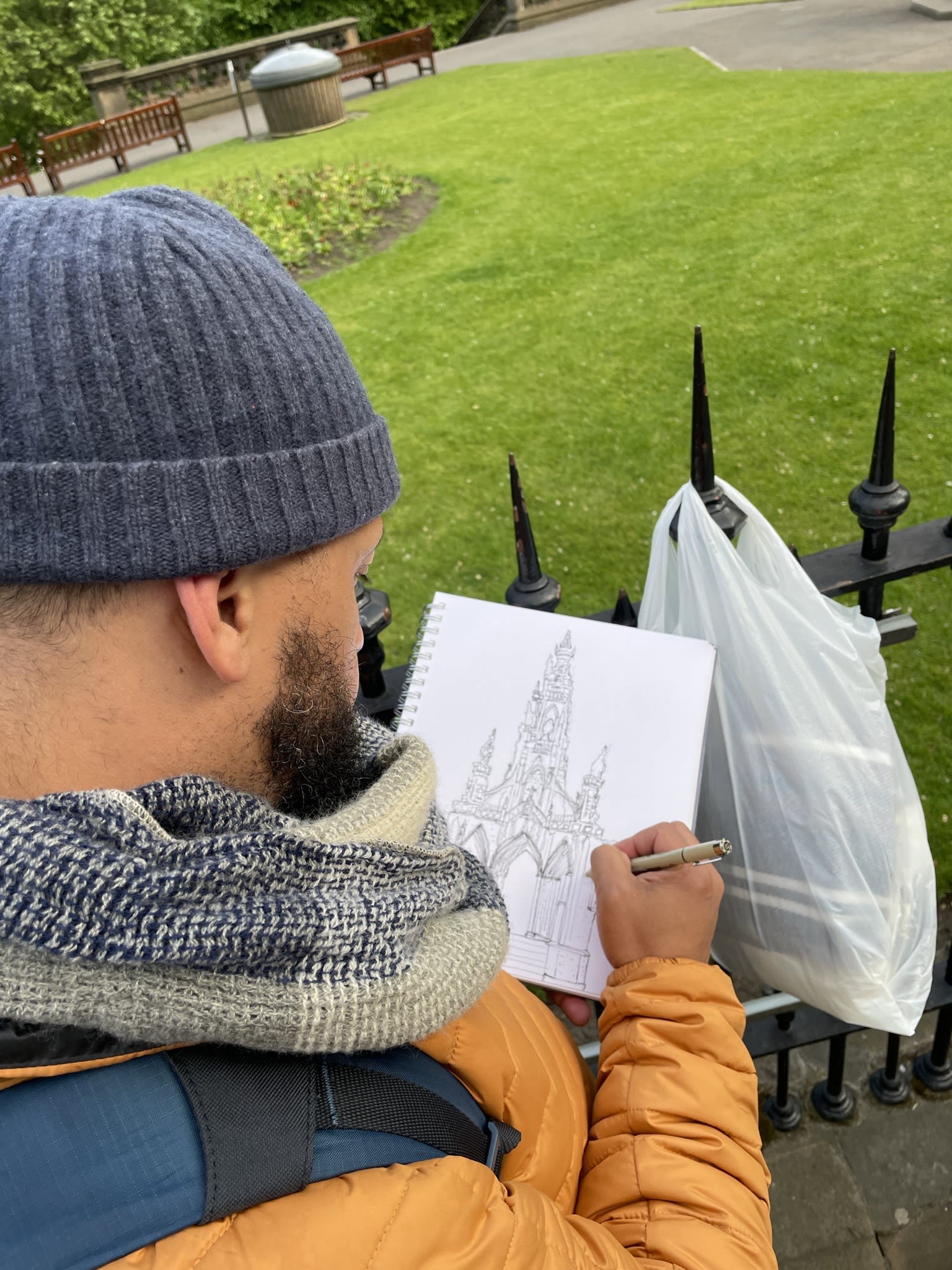
Newtown built to the north, is a beautiful example of formal, rational Georgian design in stark contrast to the meandering ways of city center.
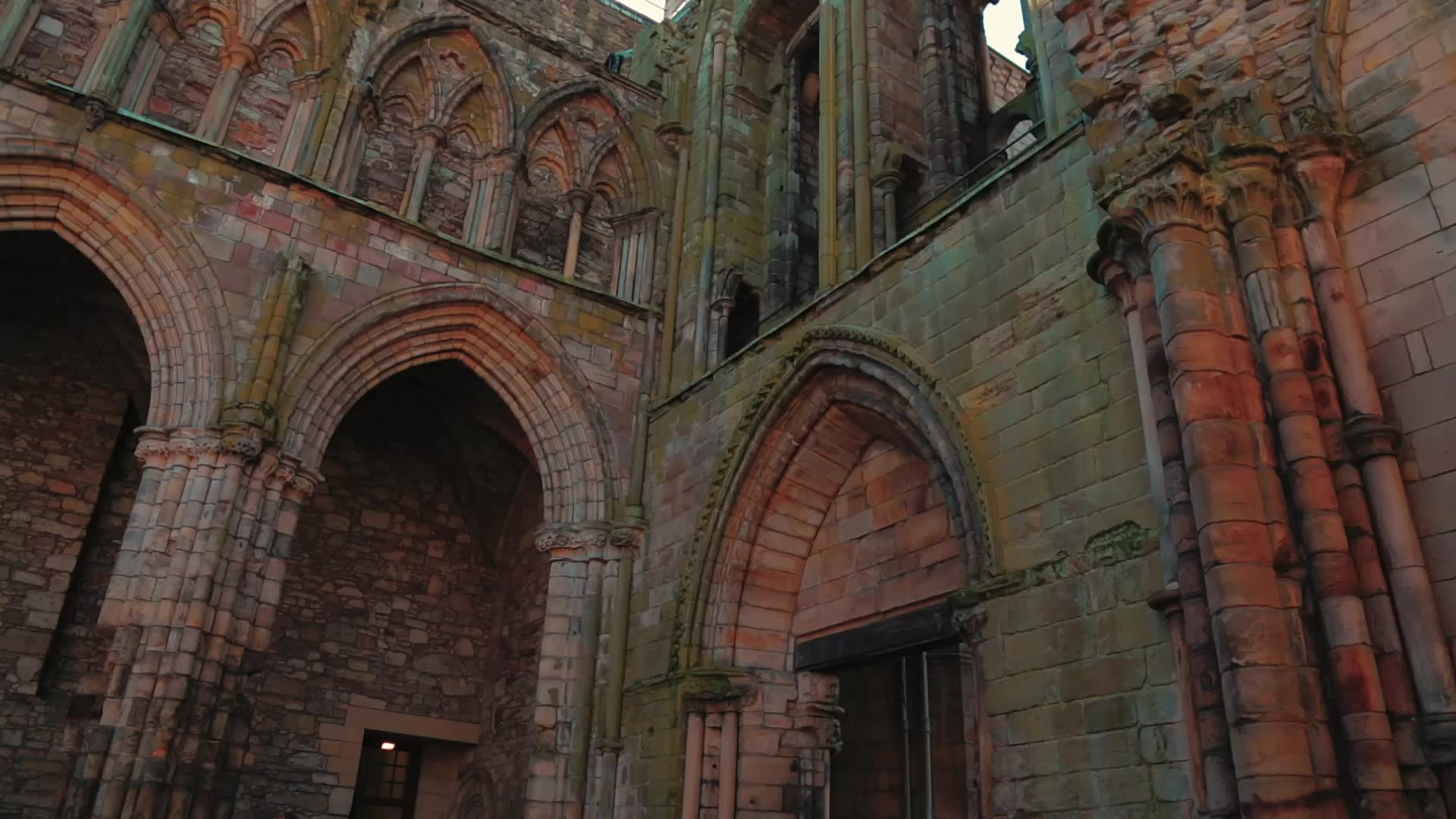
In contrast, Glasgow was settled in the medieval period, but came to prominence during the Victorian era fueled by the industrial might of the British Empire. It also boasts some wonderful examples of the Scottish version of Art Nouveau called the Glasgow Style by Charles Rennie Mackintosh and other members of the “The Four” as Mackintosh and his contemporaries came to be known. As Scotland’s commercial capital, the city has worked to reinvent itself as a youthful arts city. Recent additions to the city have included ground-breaking architecture such as the Riverside Museum by Zaha Hadid Architects.
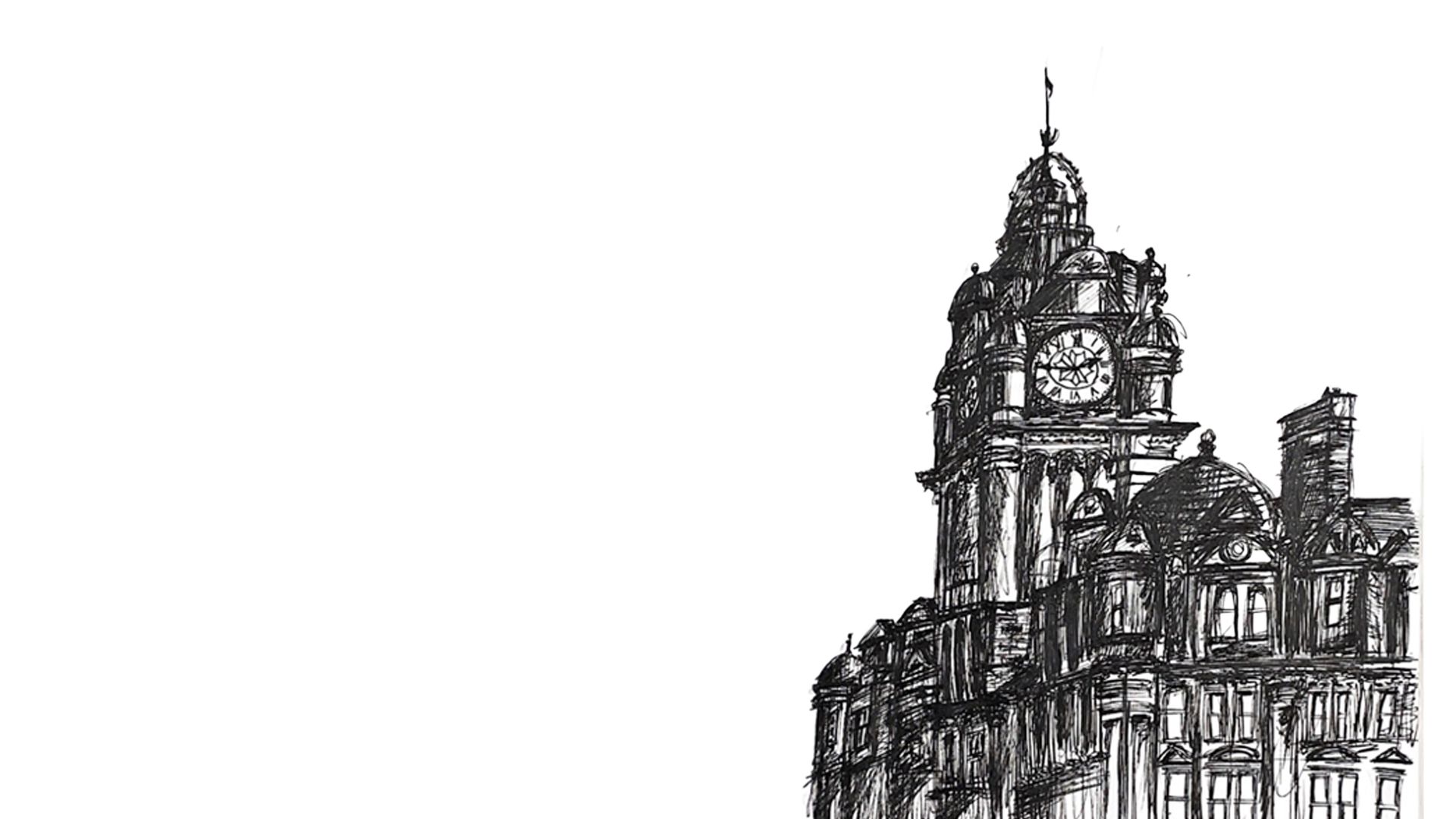
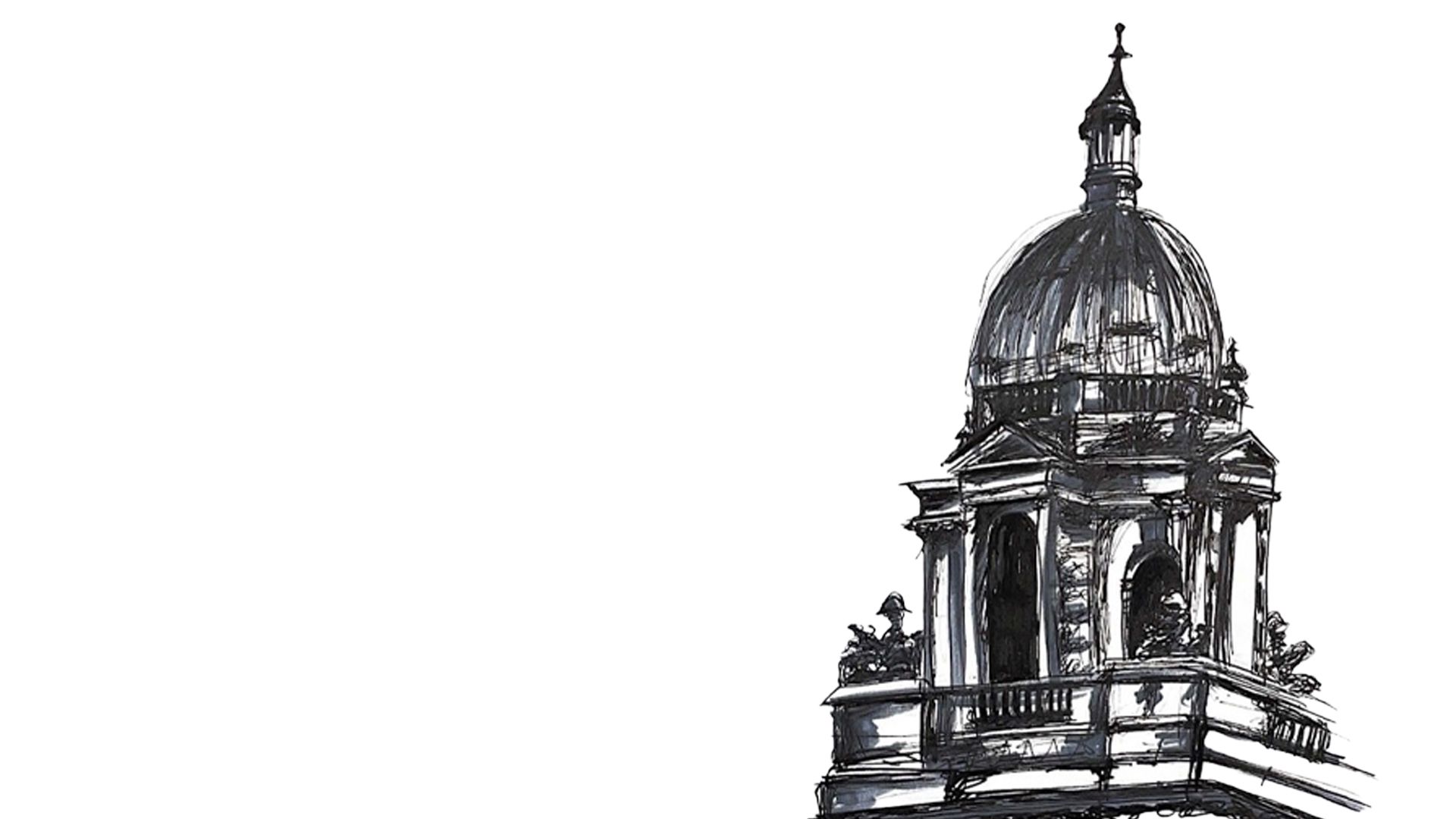
While my trip was not long, just 10 days in May 2022, we all learned so much. In total, there were seven architecture students of all ages and abilities, one engineering student and one faculty member. The first four days were spent in Edinburgh visiting Holyroodhouse Palace, the Scottish Parliament Building, Edinburgh Castle and St. Giles Church as a group. Much time was devoted to allowing the students the ability to roam and find their own subjects to sketch. After a one-hour trip by train, the next four days were spent in Glasgow visiting St. Mungo’s Cathedral, the Kelvingrove Art Gallery and Museum, the University of Glasgow, St. Enoch’s Square and the thriving commercial district called the Merchant City and Sauchiehall Street. After participating in a “high tea” at one of Mackintosh’s historic tea houses, we departed back to Edinburgh for the last two days before heading home to the states.

Students at an exhibit in Memphis which showcased sketches from being abroad in Scotland.
Students at an exhibit in Memphis which showcased sketches from being abroad in Scotland.
The distinctive part of this trip was its emphasis on sketching. The class sought to use sketching as a means of direct engagement with the urban fabric. Allowing the drawings to be a means of opening up the city to the student by making them not just tourists capturing the city through the lens of a camera (although they did that too), but active observers of the life of the city moving at a slower pace that sketching requires. To sketch involves framing the view and choosing what should be included and what should not. Finding what sketch technique should be used to capture the wealth of information at the various scales of the city was challenging yet rewarding. Based in graphic spontaneity, sketching encourages a creative approach to image making and idea documentation.
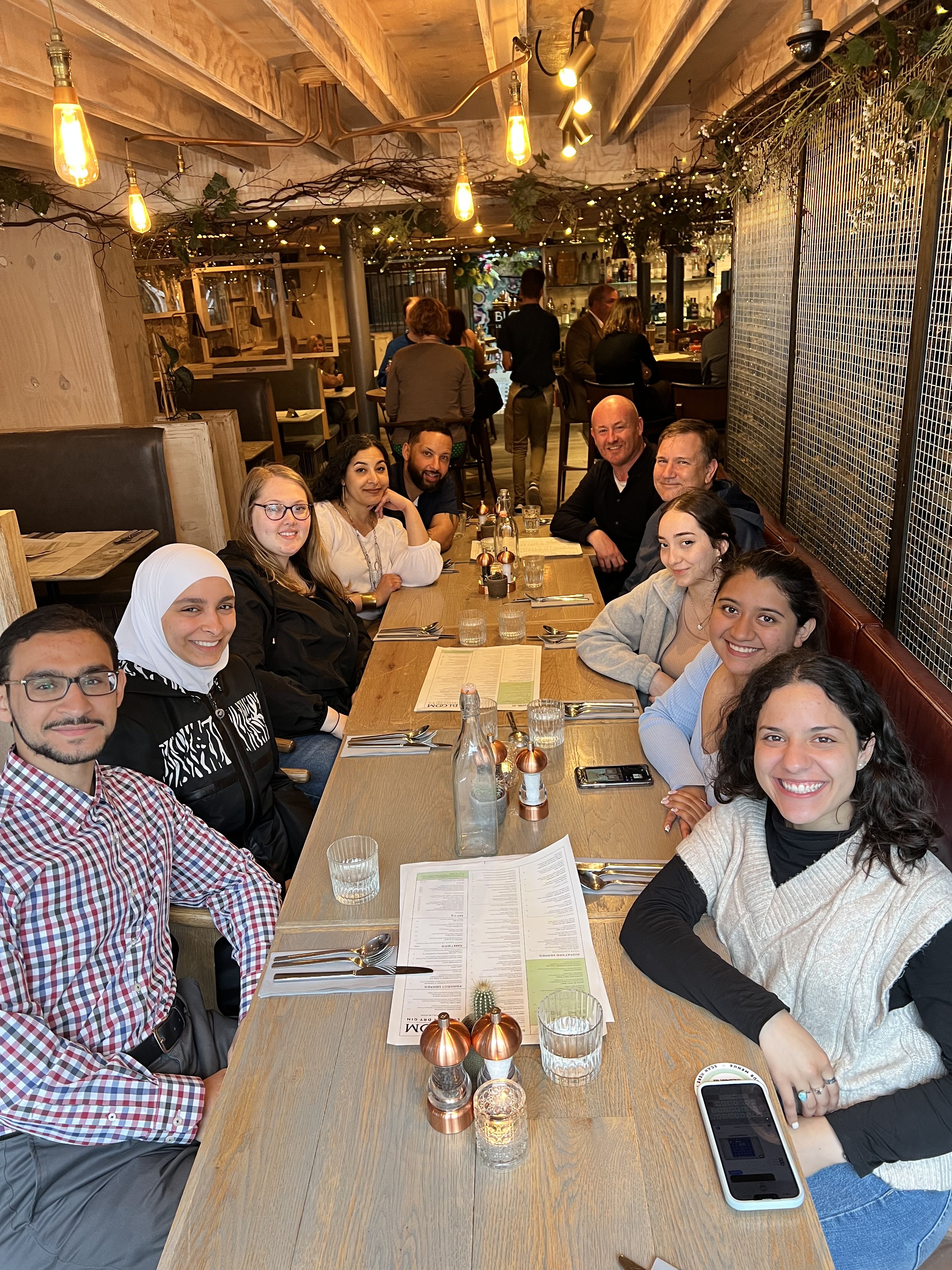
The students were promised that if they took the goals of the trip seriously and participated each day in all the sketch sessions that they would see significant advancement in their abilities. Each participant, including the faculty, saw serious advancement and experienced two great European cities along the way.
